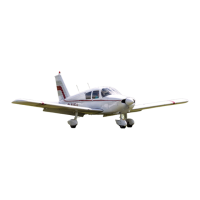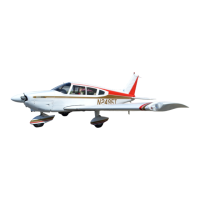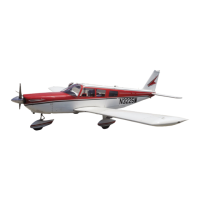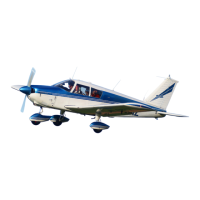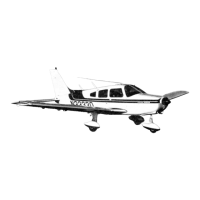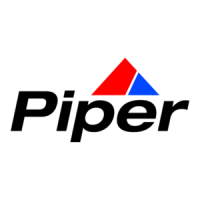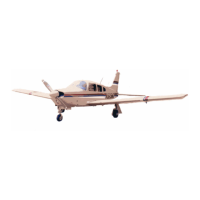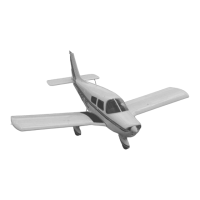•
SECTION III
THE PIPER CHEROKEE
GROUND CHECK
THE PIPER CHEROKEE
SECTION
III
CLIMB
With the engine running at 2000 RPM, switch from both magnetos
to only one and note the RPM loss; switch to the other magneto and
again note the RPM loss. Drop off on either magneto should not exceed
125 RPM.
Check vacuum gauge. Indicator should read 5" I Ig ± .1" Ilg at
2000 RPM.
Check both the oil temperature and pressure. The temperature
may be low for some time if the engine is being run for the first time of
the day, but as long as the pressure is within limits the engine is ready
for take-off.
Carburetor heat should also be checked prior to take-off to be sure
that the control is operating properly and to clear any ice which may
have formed during taxiing. Avoid prolonged ground operation with
carburetor heat ON as the air is unfiltered.
Mixture should be set full rich, except a minimum amount of
leaning is permitted for smooth engine operation when taking off at
high elevation.
TAKE-OFF
Just before take-off the following items should be checked:
1.
Controls
6. Fuel on proper tank
2.
Flaps "UP"
7. Electric fuel pump "ON"
3.
Tab set
8. Engine gauges normal
4.
Mixture "RICH"
9. Door latched
5.
Carburetor heat "OFF"
10. Altimeter set
11.
Safety belts/shoulder harness - fastened
The take-off technique is conventional for the Cherokee. The tab
should be set slightly aft of neutral, with the exact setting determined
by the loading of the aircraft. Allow the airplane to accelerate to 50 to
60 miles per hour, then ease back on the wheel enough to let the
airplane fly itself off the ground. Premature raising of the nose, or
raising it to an excessive angle will result in a delayed take-off. After
take-off let the aircraft accelerate to the desired climb speed by
lowering the nose slightly. To shorten take-off distance, flaps extended
up to 25
°
may be used.
The best rate of climb at gross weight will be obtained at
85 miles per hour. The best angle of climb may be obtained at
74 miles per hour. At lighter than gross weight these speeds
are reduced somewhat. For climbing enroute a speed of 100
miles per hour is recommended. This will produce better for-
ward speed and increased visibility over the nose during the
climb.
STALLS
The gross weight stalling speed of the Cherokee with power
off and full flaps is 54 MPH on the 150, 55 MPH on the 160 and
57 MPH on the Cherokee 180. This speed is increased 9 miles
per hour with the flaps up. Stall speeds at lower weights will
be correspondingly less.
CRUISING
The cruising speed of the Cherokee is determined by many
factors including power setting, altitude, temperature, loading,
and equipment installed on the airplane.
The normal cruising power is 75% of the rated horsepower
of the engine. True airspeeds which may be obtained at various
altitudes and power settings can be determined from the charts
in "Section IV" of this handbook.
Use of the mixture control in cruising flight reduces fuel
consumption significantly, especially at higher altitudes, and reduces
lead deposits when the alternate fuels are used. The mixture should be
leaned when 75% power or less is being used. If any doubt exists as to
the amount of power being used, the mixture should be in the FULL
RICH position for all operations. Always enrich the mixture before
increasing power settings.
16
790202
790202
17
